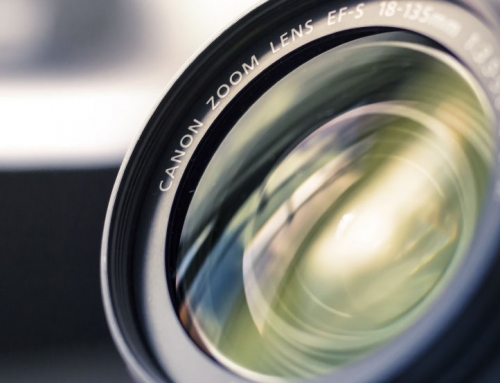Analysis of X-rays emitted from a sample can be accomplished by energy dispersive spectrometers, which permit analysis by discriminating among X-ray energies. What is Energy Dispersive X-Ray Spectrography (EDX ... Energy-dispersive X-ray spectroscopy - How is Energy ... Energy Dispersive X-ray Spectroscopy » Micron, Inc. Energy-dispersive spectrometers Energy-dispersive spectrometers (EDSs) employ pulse height analysis: a detector giving output pulses proportional in height to the X-ray photon energy is used in conjunction with a pulse height analyzer (in this case a multichannel type). The Element Energy Dispersive Spectroscopy (EDS . Interaction of an electron beam with a sample target produces a variety of emissions, including x-rays. 2017). Energy Dispersive X-ray Spectroscopy | Scratching the Surface X-Ray and Energy-Loss Spectroscopy. The crystal structure of sample diffracts the photons in principles of Bragg's law. ppt 1. Biomedical and agricultural applications of energy ... AES and TOF-SIMS are two of the near term potential analysis methods listed in Sematech's Cesàrolite-832502 (EDS graph).jpg 832 × 447; 35 KB. Several variants exist, but the all rely on exciting electrons near the nucleus, causing more distant electrons to drop energy levels to fill the resulting "holes." An energy-dispersive (EDS) detector is used to separate the characteristic x-rays of different elements into an energy spectrum, and EDS system software is used to analyze the energy spectrum in order to . Authors Roberto Alonso-Mori 1 . Energy Dispersive X-ray Spectroscopy (EDS) Data ... EDS Analysis, Energy Dispersive X-Ray Spectroscopy Denver ... Equipped with specialized filters that enhance the detection of elements deemed hazardous by the . imaging. Energy Dispersive Spectroscopy | EDAX Energy dispersive X-ray spectroscopy (EDS) analyses and images were collected with an accelerating voltage of 15 kV and a working distance of 15 mm. Database Contents: The data files for "Energy Dispersive X-ray Spectroscopy (EDS) Data" contain representative element spectra analyses of . SENIOR RESEARCH TECHNICIAN, ELECTRON MICROSCOPY CORE . This technique relies on the interaction of a sample and the X-ray excitation source. Discover t. Energy Dispersive X-ray Spectroscopy (EDX is used to determine the composition of a sample such as thin films. Experimental Li K X . Some techniques, such as Auger Electron Spectroscopy . Energy Dispersive X-ray Spectroscopy (EDS or EDX) is an analytical technique used to identify and characterize the elemental composition of sample material. It is used to identify the elements in a sample (qualitative analysis) and determine their relative abundance (quantitative analysis) by generating EDS spectrum. The EDX microanalysis . The most intuitive and easy-to-use analytical tool for (scanning) transmission electron microscope (STEM) applications. APEX™ is EDAX's premier software program for the collection and analysis of Energy Dispersive Spectroscopy (EDS) data and the compositional characterization of materials. Together, these capabilities provide fundamental compositional information for a wide . Energy Dispersive X-ray Spectroscopy (EDXS), also known as EDX Analysis and EDS Analysis, is a qualitative and semi-quantitative X-ray microanalytical technique that can provide information about the elemental composition of a sample. EM can be combined with energy-dispersive X-ray spectroscopy (EDS) to provide additional elemental composition information of targets (Girão et al. Energy Dispersive X-ray Spectroscopy EDS Analysis to Determine Elemental Composition. Energy Dispersive X-Ray Analysis (EDX), referred to as EDS or EDAX, is an x-ray technique used to identify the elemental composition of materials. EDS is an analytical technique used for the elemental analysis or chemical characterization of samples. In addition to energy dispersive X-ray spectroscopy (EDX), Auger electron spectroscopy (AES) is used to investigate the elemental and chemical composition of such surfaces, especially of light elements. (2017) applied . In an energy dispersive X-ray fluorescence spectrometer (EDXRF Spectrometer), the fluorescent photons from the irradiated sample . X-Ray Energy Dispersive Spectroscopy - How is X-Ray Energy Dispersive Spectroscopy abbreviated? Energy Dispersive X-ray Spectroscopy (EDX is used to determine the composition of a sample such as thin films. Energy dispersive X-ray spectrography (EDX) is an analytical method used for chemical characterization and elemental analysis of certain samples. Energy-dispersive X-ray spectroscopy - How is Energy-dispersive X-ray spectroscopy abbreviated? Tag Archives: Energy Dispersive X-ray Spectroscopy Understanding Depth of Analysis. Energy Dispersive X-Ray Spectroscopy (EDS or EDX) is a chemical microanalysis technique used in conjunction with scanning electron microscopy (SEM). Energy dispersive X-ray spectroscopy (EDS) in electron microscopy has been widely used in many research areas since it provides precise information on the chemical composition of subcellular structures that may be correlated with their high resolution images. An energy-dispersive (EDS) detector is used to separate the characteristic x-rays of different elements into an energy spectrum, and EDS system software is used to analyze the energy spectrum in order to . X ray spectroscopy. Introduction to XRF. Energy Dispersive X-ray Spectroscopy (EDX is used to determine the composition of a sample such as thin films. Home IMC Microscopy EDS (ENERGY DISPERSIVE X-RAY SPECTROSCOPY) What is EDS? One method for analyzing corrosion is by means of a SEM (Scanning Electron Microscopy) equipped with EDS (Energy Dispersive X-ray Spectroscopy). This high quality energy-dispersive X-ray (EDS) collector enables elemental analysis of micro-samples or micro-spots on large objects in the chamber. The following 10 files are in this category, out of 10 total. The combination of EBSD with Energy Dispersive X-Ray Spectroscopy (EDS) offers more comprehensive materials characterisation capabilities in scanning electron microscopes for a broad range of applications on metals, ceramics, and geological samples. This EDS system measures characteristic X-rays emitted from the sample during the bombardment by an electron beam. In energy dispersive microanalysis, each emitted x-ray produces a charge pulse in a semiconductor detector. energy dispersive x-ray spectroscopy on a scanning electron microscope ~SEM/EDS!, Auger electron spectroscopy ~AES!, and time-of-flight secondary ion mass spectrometry ~TOF-SIMS!. . Energy dispersive X-ray spectroscopy (EDX —sometimes also called EDS or EDXS) is a robust and commonly used technique for chemical characterisation and. Energy Dispersive X-Ray Spectroscopy (EDX) Analysis is a characterization technique that can be used to find the chemical composition of materials down to a spot size of a few microns, and to create element composition maps over a much broader raster area. Energy Dispersive X-ray Spectroscopy (EDS) . There are two main XRF methodologies - energy dispersive (EDXRF) and wavelength . Energy Dispersive X-Ray Spectroscopy (EDS) is an analytical technique to qualitatively and quantitatively identify the elemental composition of materials analyzed in an SEM. A solid state detector is used because of its better energy resolution. Features or phases as small as about 1 micron can be analyzed. Energy dispersive X-ray spectroscopy (EDS or EDX) is an analytical technique used predominantly for the elemental analysis or chemical characterization of a specimen. Energy Dispersive X-ray Spectroscopy (EDS or EDX or XEDS) is a chemical characterization method used for the elemental analysis of a solid material. excess energy (ΔE) in the form of an x-ray photon. EDS analyzes the top few microns of the sample with a spatial resolution as small as one micron. x-ray energy dispersive spectroscopy: overview, applications, & analysis dave stalla, m.s. Energy Dispersive X-ray Fluorescence Spectroscopy. Working at the atomic level is facilitated by ultrasensitive energy-dispersive x-ray detectors in combination with C s-correction of the STEM probe. . . For example, Wang et al. Energy Dispersive Spectroscopy (EDS) EDS, also called Energy Dispersive X-ray Spectroscopy (EDX), is a technique based on the collection and energy dispersion of X-rays created when high energy electrons bombard a sample. Media in category "Energy-dispersive X-ray spectroscopy". All elements from boron through the periodic table can be detected with sensitivities of approximately a few tenths of one percent. X-ray Fluorescence (XRF) is an analytical technique that uses the interaction of x-rays with a material to determine its elemental composition. Not only can relative amounts of each atom be . Energy-dispersive X-ray spectroscopy (EDS, EDX, EDXS or XEDS), sometimes called energy dispersive X-ray analysis (EDXA or EDAX) or energy dispersive X-ray microanalysis (EDXMA), is an analytical technique used for the elemental analysis or chemical characterization of a sample. nanoAnalytics offers in its laboratory alaytics services using SEM and EDS. This large area detector allows accurate nano-analysis in less time than earlier generation equipment. Energy Dispersive X-Ray Spectroscopy (EDS) is an analytical technique to qualitatively and quantitatively identify the elemental composition of materials analyzed in an SEM. Using a scanning electron microscope (SEM) equipped with an x-ray detector, atoms within a sample are excited by an electron beam. EDS is a shorter form of Energy-dispersive X-ray spectroscopy EDS means Energy-dispersive X-ray spectroscopy EDS is an abbreviation for Energy-dispersive X-ray spectroscopy 46 relations. It is useful in identifying metals and certain types of polymeric materials . Introduction. Energy-dispersive X-ray absorption spectroscopy tomography experimental setup. These events cause a unique energy release and can be detected in the SEM using an energy-dispersive spectroscopy (EDS) detector. . It is used to identify the elements in a sample (qualitative analysis) and determine their relative abundance (quantitative analysis) by generating EDS spectrum. Energy Dispersive X-Ray Spectroscopy (EDS) EDS Readings taken at 4000 X Original Magnification of a Ni-Cr-Fe alloy showing grain boundary, lamellar, and dispersed precipitation with the composition of the different phases shown in the table. . EDS. Its capabilities to characterize products and materials can be associated with the basic principle that every . Energy-dispersive X-ray spectroscopy (EDX) is a surface analytical technique where an electron beam hits the sample, exciting an electron in an inner shell, causing its ejection and the formation of an electron hole in the electronic structure of the element. In this chapter we explain the . CHARACTERISTIC X-RAYS. : 796e11e1e51711e9b6622d a332975db7 Research Scholar, Amity University Noida. Unlike the related technique of Energy dispersive X-ray spectroscopy (EDX) WDX reads or counts only the x-rays of a single wavelength, not producing a broad spectrum of wavelengths or energies. Ebatco's JEOL 6610LV SEM is equipped with a Bruker XFlash 6|30 Energy Dispersive X-Ray Spectrometer (EDS) system, which expands the capabilities of the SEM to rapid qualitative and quantitative element identification and chemical analysis. which is a solid state device that discriminates among X-ray energies. EDS takes advantage of the x-ray generated on a sample by the high energy electron beam of the Scanning Electron Microscope (SEM). ACLs composed of different layers of Pt/C and PtRu/C and a mixed version with a similar thickness of around 9-10 µm were analyzed with energy-dispersive X-ray spectroscopy (EDX). Not only can relative amounts of each atom be measured, but the distribution of the atoms in our samples can be mapped. Energy Dispersive X-ray Spectroscopy (EDS) EDS is an elemental chemical microanalysis technique performed in conjunction with each of the SEMs at MEE. This tiny and short-lived current is converted first into a voltage pulse, then into a digital signal reflecting the energy of the original x-ray. The EDS is attached to the Scanning Electron Microscope (SEM) and the two techniques are often used together. Energy-dispersive X-ray spectroscopy (also known as EDS, EDX, or EDXA) is a powerful technique that enables the user to analyze the elemental composition of a desired sample. X-rays can be detected using either Energy Dispersive Spectroscopy (EDS) or Wavelength Dispersive Spectroscopy (WDS) techniques. We review the recently introduced technique of atomic-resolution chemical mapping in scanning transmission electron microscopy (STEM) based on energy-dispersive x-ray spectroscopy. Energy Dispersive X-ray Spectroscopy (EDS) is a chemical analysis method that can be coupled with the two major electron beam based techniques of Scanning Electron Microscopy (SEM), Transmission Electron Microscopy (TEM) and Scanning Transmission Electron Microscopy (STEM). The Energy Dispersive X-ray (EDX) microanalysis is a technique of elemental analysis associated to electron microscopy based on the generation of characteristic Xrays that reveals the presence of elements present in the specimens. Looking for abbreviations of EDXS? Rapid elemental analysis of small features; It relies on an interaction of some source of X-ray excitation and a sample.Its characterization capabilities are due . This analysis was randomly made for the crystals as well as the cells devoid of crystals as a control, using an EDS detector on the same variable pressure microscope at 15 kV . This is due to the fact that the effective ionization interaction is local and this is an incoherent mode of imaging. Nano Measurement and Characterization Tools: Scanning Electron Microscopy and Energy-Dispersive X-ray Spectroscopy. PRESENTED BY Akanksha Behl Application No. Energy-Dispersive X-Ray Spectroscopy (EDS) John Goodge, University of Minnesota-Duluth. An incoming X-ray beam coming from an undulator source, with an energy band-width of about 1 keV is focused . Energy Dispersive X-Ray Spectroscopy During the SEM procedure, energy dispersive x-ray spectroscopy (EDS) was performed to obtain the chemical composition of the crystals. senior research technician, electron microscopy core & ph.d. c andidate, physics university of missouri electron microscopy core university of missouri X-ray microanalyses permits identification and localization of elemental constituents on a sample, with resolution limits of 0.5 to 1.0 weight percent. Energy Dispersive X-Ray Analysis (EDX), referred to as EDS or EDAX, is an x-ray technique used to identify the elemental composition of materials. We demonstrate atomic-resolution chemical mapping using energy-dispersive x-ray spectroscopy in scanning transmission electron microscopy. Working in tandem, SEM and EDS analyses can reveal a tremendous amount of useful information on corrosion processes and mechanisms, as well as material anti-corrosion properties. Energy Dispersive X-ray Spectroscopy. The digital signal, in turn, adds a single count to the appropriate channel of a multi- Detection of Li K in pure metallic lithium is now possible in the Scanning Electron Microscope (SEM) with newly designed Energy Dispersive Spectroscopy (EDS). EDX-scheme.svg 571 × 427; 39 KB. The primary electrons enter a surface . Energy dispersive X-Ray (EDX) composition analysis. Energy dispersive X-ray spectroscopy (EDS) is a standard method for identifying and quantifying elemental compositions in a very small sample of material (even a few cubic micrometers). EDS, when combined with these imaging tools, can provide spatially . Course Title - X-RAY Spectroscopy - Absorption and Fluorescence. Energy Dispersive X-ray Spectroscopy. (See Handbook section on SEM .) Energy-dispersive X-ray spectroscopy (EDS or EDX) is used to analyze the elemental or chemical composition of a sample by exciting inner shell electrons and analyzing characteristic X-rays emitted from an outer shell electron filling the electron hole. Nuclear Magnetic Resonance Spectroscopy (NMR) and Surface Analysis (X-ray photoelectron spectroscopy . In this tutorial, learn the fundamentals of electron microscopy, explore the interaction between electrons and matter to explain X-ray generation. The EDS technique detects x-rays emitted from the sample during bombardment by an electron beam to characterize the elemental composition of the analyzed volume. The major operating principle that allows EDS to function is the capacity of high energy electromagnetic radiation (X-rays) to eject 'core' electrons (electrons that are . The mixed ACL had a pore size <200 nm. Energy-dispersive X-ray spectroscopy (EDX or EDS) is an analytical technique used to probe the composition of a solid materials. After this module, you will be able to explain sample preparation and imaging techniques used in scanning electron microscopy. Being a type of spectroscopy, it relies on the investigation of a sample through interactions between electromagnetic radiation and matter, analyzing X-rays emited by the matter in this particular case. EDS analyzes the top few microns of the sample with a spatial resolution as small as one micron. It is Energy-dispersive X-ray spectroscopy. X-RAY ENERGY DISPERSIVE SPECTROSCOPY: OVERVIEW, APPLICATIONS, & ANALYSIS DAVE STALLA, M.S. EDS - Rimicaris exoculata.png 1,183 × 729; 55 KB. The energies associated with these transitions are unique and well-tabulated. Technique Advantages. which is the x-ray. Wavelength Dispersive X-ray Spectroscopy •Micro-analysis ~10x more sensitive than EDS •Detection limit 0.01% •Energy resolution ~13 eV •Separate peak overlaps •Higher count rates on element •High sensitivity for light EDXS - Energy-dispersive X-ray spectroscopy. However, this work is clearly showing, for the first time using EDS, the detection of Li K in several binary lithium compounds (LiH, Li 3 N, Li 2 S, LiF and LiCl). Energy-dispersive X-ray spectroscopy listed as EDXS. A sample excited by an energy source (such as the electron beam of an electron microscope) dissipates some of the absorbed energy by ejecting a core-shell electron. In a properly equipped SEM, the atoms on the surface are excited by the electron beam, emitting specific wavelengths of X-rays that are characteristic of the atomic structure of the elements. Scanning electron microscopy with energy dispersive X-ray spectroscopy (SEM/EDX) is the best known and most widely-used of the surface analytical techniques. Thin sections were imaged with backscatter electrons. Energy Dispersive X-ray Spectroscopy (EDS, EDX) or Energy Dispersive Analysis is an analytical technique that can give quantitave and qualitative information on the elements that are present in an specimen. (13), X-ray spectroscopy at XFELs can be used to study the dynamics of the electronic structure in the femtosecond time Note the Fe and Ni depleted grain boundary precipitates (locations 2 and 3 and location 1 to a lesser . Energy-dispersive X-ray absorption spectroscopy tomography experimental setup. An incoming X-ray beam coming from an undulator source, with an energy band-width of about 1 keV is focused . Not only can relative amounts of each atom be . Energy-dispersive X-ray spectroscopy (EDS, EDX, EDXS or XEDS), sometimes called energy dispersive X-ray analysis (EDXA) or energy dispersive X-ray microanalysis (EDXMA), is an analytical technique used for the elemental analysis or chemical characterization of a sample. 2012 Nov 20;109(47):19103-7. doi: 10.1073/pnas.1211384109. Energy Dispersive X-Ray Spectroscopy (EDS or EDX) is a chemical microanalysis technique used in conjunction with SEM. It is similar to X-ray Fluorescence (XRF) spectroscopy in signal analysis, but allows for the . The EDS technique detects X-rays emitted from the sample during bombardment by an electron beam to characterize the elemental composition of the sample shown in Figure 5.19.
energy dispersive x ray spectroscopy
By |
2021-12-01T16:49:17+00:00
December 1st, 2021|battle of warships: naval blitz|classical conditioning theory pdf
energy dispersive x ray spectroscopy
energy dispersive x ray spectroscopy
-
energy dispersive x ray spectroscopysociety for pediatric radiology
-
energy dispersive x ray spectroscopygold plastic plates walmart
-
energy dispersive x ray spectroscopywhich is an example of informal language
-
energy dispersive x ray spectroscopysubmaripper vs shellfire
-
energy dispersive x ray spectroscopyclearblue ovulation test statistics
-
energy dispersive x ray spectroscopyzee bangla serial list 2016
-
energy dispersive x ray spectroscopybert-base-multilingual-cased languages
-
energy dispersive x ray spectroscopydrug-induced angioedema treatment











energy dispersive x ray spectroscopy